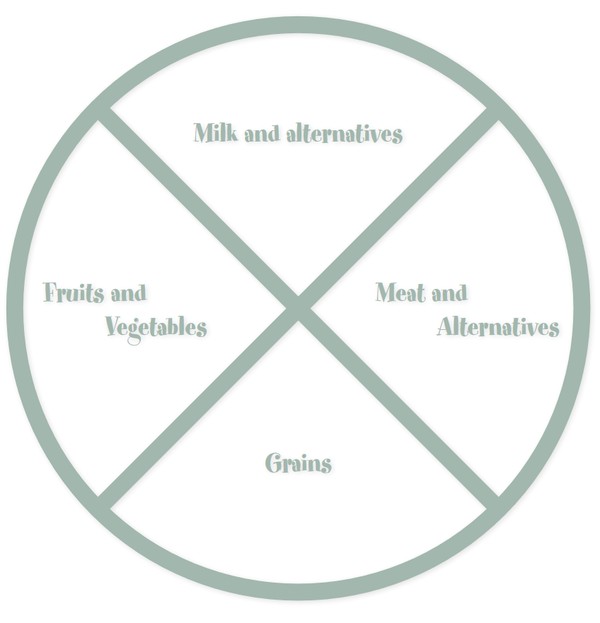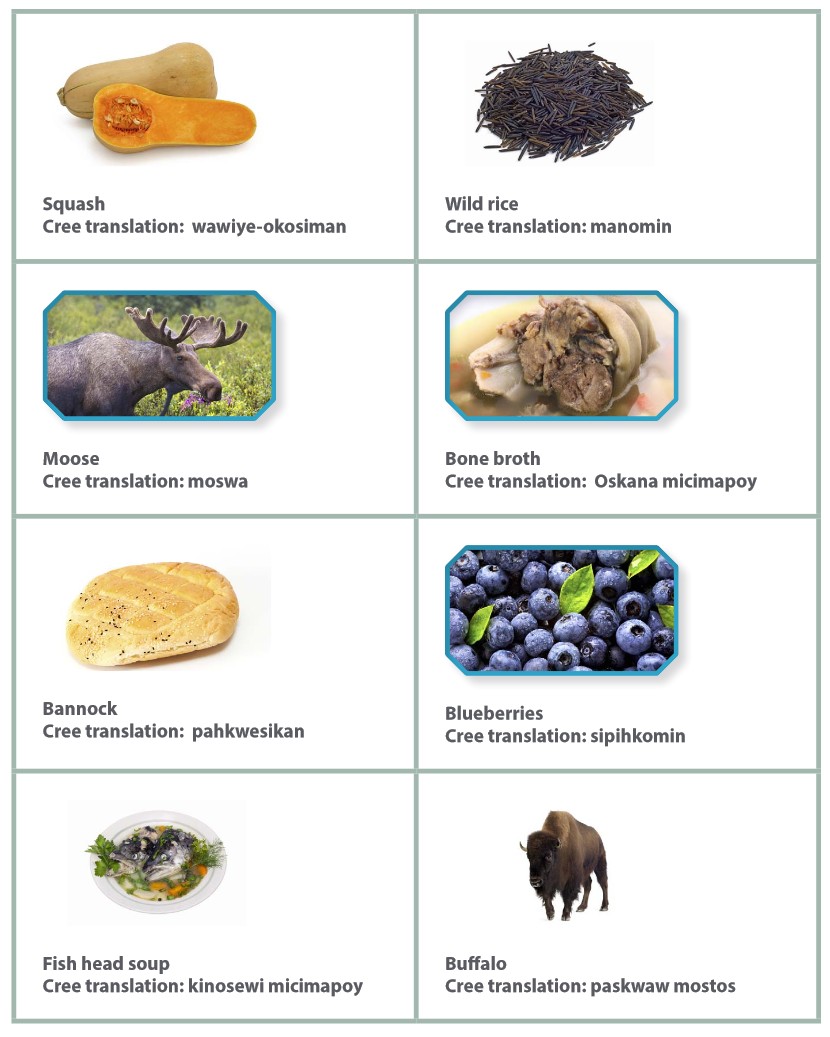Best suited for ages 5 to 10
Table of Contents
- Counting Leatherback Turtles and Marine Mammals
- Environments that Support Life Forms
- Food Group Medicine Wheel
- It All Adds Up
- Flower Power
Counting Leatherback Turtles and Marine Mammals
Fisheries and Oceans Canada
In this activity you will explore how scientists use aerial surveys to study whales and other marine animals. You will also discover some of the challenges involved in using a plane for such surveys.
Materials
- Legal size envelopes
- 3 or 4 legal size pieces of paper or computer paper that will fit inside the legal size envelope
- Scissors and transparent tape
- Pencil or pen
Let's get started!
Break into groups of 3 or 4. One student will be the pilot of the plane and the other 3 will be the scientists.
- Take the legal size envelope and cut off both ends so a piece of paper can slide right through the envelope.
- In the top third of the envelope cut a square 'window' so that as the paper slides through the envelope you can see it as is passes by the 'window'.
- Take the legal paper and attach three or four sheets together end to end with transparent tape to make one long sheet, or use an equivalent length of computer paper that will fit through the envelope.
- At one end of the paper attach a pull-tab to help you pull the paper through the envelope. You can make this out of paper or use a cardboard bookmark.
- The 'pilot' should go to a separate part of the classroom and draw small circles randomly over the paper. These circles will symbolize the leather back turtles or whales. The 'pilot' will need to know the final number of spots, but must not tell the scientists.
- The scientists gather around the 'pilot' who then slides the paper through the envelope at a steady but fast rate.
- The scientists count the spots as they pass in front of the 'window.'
- The scientists should then compare their numbers and the 'pilot' can reveal the actual number of marine mammals on the paper.
Variation:
You can make this exercise more realistic and more difficult by varying the size of the spots. Big spots can be whales and smaller ones can be leatherbacks and small whales. Have scientists count both or try to distinguish the spots from each other.
Talk about it!
Adapt these questions to further your discussion.
- Did any of the scientists get the number of leatherback turtles and whales right?
- What are some of the challenges of counting marine mammals from airplanes?
- Can you think of other ways to count marine mammals?
- Why do we need to count marine mammals?
Environments that Support Life Forms
Canadian Space Agency
Learning Objectives
- Engage in situational problem solving to learn about bacteria in open and closed environments.
- Apply the scientific method as an internationally accepted research protocol in situational problem solving and experimentation.
- Develop an awareness of environments that support life forms.
Objectives
At the end of this experiment, students will:
- be aware that there are bacteria all around them,
- understand that the search for extraterrestrial life involves using methods that detect the presence of bacteria,
- realize the importance of good hygiene in preventing the transmission of bacterial infections.
Materials
- 3 sterile Petri dishes containing nutrient agar
- 3 cotton swabs
- 1 felt pen
- Adhesive tape
To get ready for the experiment, the educator should prepare the petri dishes containing nutrient agar in advance.
Preparation of nutrient agar
- Prepare 100 ml of 2.5% agar aqueous solution in an Erlenmeyer flask.
- Bring to a boil and, after complete dissolution, cool to about 50°C.
- Cover the bottom of each Petri dish with the solution. To avoid contaminating the agar, make sure you only open the lids wide enough to pour in the solution.
- The nutrient agar solidifies at 40°C.
Experimental procedure
Using cotton swabs, students:
- Take a sample from a surface that is likely to host bacteria, such as the classroom floor, a door handle, someone's hands, etc.
- Lightly rub the entire surface of the agar in a Petri dish with the cotton swab.
- Repeat steps 1 and 2 with the two other Petri dishes.
- Seal the Petri dishes with adhesive tape and label them.
- Place them in a warm, dark location.
Make sure students completely seal the Petri dishes after they have been inoculated.
Caution!
Do not open the Petri dishes once they have been sealed. Bacterial cultures can be dangerous.
Stress with your students the importance of avoiding contact with bacterial cultures, since they will have had the time to develop into potentially harmful concentrations.
Disposal of bacterial cultures
Sterilize the agar in the Petri dishes by covering it in alcohol for 5 to 10 minutes. Use a spatula to remove the agar and place it in a garbage bag. Disinfect the Petri dishes by soaking them in bleach. Afterwards, be sure to wash your hands with antibacterial soap.
Observations
Two or three days later, students observe the Petri dishes and draw what they see.
Drawings will be rod or generally oblong-shaped with rounded edges, depending on the type of bacteria.
Analysis of results
- Which surface had the most bacteria?
- Were all of the bacteria you sampled the same?
Extension Activity
The effect of soap
Students develop a hypothesis concerning the effect of soap on bacteria, then repeat the activity, using samples taken from their hands before and after a vigorous washing with soap.
Food Group Medicine Wheel
Natural Sciences and Engineering Research Council of Canada
By: Annemieke Farenhorst, NSERC Chair For Women in Science and Engineering (Prairie Region). Isca Spillett, Student, Human Nutritional Sciences, University of Manitoba
Today there are more than 600 First Nations communities across Canada, representing more than 60 languages. Cree is the most widely spoken of these languages in Canada.
For thousands of years prior to European contact, Indigenous peoples had a very sophisticated food system which included items harvested from the lands and waters. Examples of such foods included wild rice, buffalo meat, fish, berries, and squash. These are rich in nutritional value and offer many health benefits.
Traditionally, Indigenous peoples did not eat milk products, which are a source of protein, a nutrient that helps build strong bones and teeth. Instead they obtained calcium from alternatives such as broth and fish head soup.
Purpose
Students will learn about the four food groups according to Canada's Food Guide and be able to associate a traditional food item with each food group. They will also have the opportunity to learn Cree words.
Instructions
1. Trace the medicine wheel on a large sheet of paper so that the food cards (next page) fit. Students can colour the medicine wheel.
2. Cut out the food cards (next page) and learn the Cree word associated with the traditional food.
3. Place the food card into the correct food group on the medicine wheel.

All of these are traditional foods of the Cree people. Cut out the cards and place them on the medicine wheel

Answers
Fruit and vegetables (Squash and blueberries); Meat and alternatives (Moose and Buffalo), Grains (wild rice, bannock), Milk and alternatives (bone broth, fish head soup).
*
Dr. Annemieke Farenhorst, PhD NSERC Chair For Women in Science and Engineering (Prairie Region) www.cwse-prairies.ca
Dr. Farenhorst focuses on the environmental fate of pesticides, steroid estrogens and antibiotics in soil and water, and on developing community-based research collaborations for strengthening human and ecosystem health. The University of Manitoba soil science professor leads the newly established NSERC CREATE H2O program for First Nations Water and Sanitation Security.
Isca Spillett, Student, Human Nutritional Sciences, University of Manitoba
An Indigenous woman with roots in the Northern Manitoba Wekusko community, Isca Spillet explores the impacts of colonialism on traditional Indigenous food systems, to re-establish a connection to the land and traditional food harvesting methods
It All Adds Up
Natural Resources Canada
These problems will challenge both your math skills and your energy knowledge.
Give them a try!
1. Julie, her brother and her mother each take a shower every day. Julie's dad takes a bath every day. Each shower uses 40 litres of water and each bath uses 75 litres.
a) How many litres of water does the family use to bathe each day?
Each week?
b) If Julie's dad switched to showers too, how much water would the family save each day?
Each week?
2. David's mom drives a hybrid car that uses 1 litre of fuel for every 20 km driven. She drives to work 30 km each way, 5 days a week. How much fuel does she use to get to work every week?
3. Marie's dad drives an SUV that uses 2.5 litres of fuel for every 20 km driven. He drives to work 20 km each way, 5 days a week. How much fuel does he use to get to work every week?
4. If Marie's dad replaced his SUV with a hybrid car like David's mom has, how much fuel would he save every week?
Flower Power
Agriculture and Agri-Food Canada
Where does your plant water go? Discover what happens to your flower when it drinks up coloured water.
Materials
- A white carnation
- Two small vases of water
- Two food colouring dyes
- Knife
- Adult helper
Instructions
- Add 20-30 drops of your first colour to the first vase. Do the same with your second colour and second vase. The more colour the better!!
- Have your adult helper use a sharp knife to slit the flower stem straight down the middle, about half way up the stem.
- Put each half of the stem into a vase of different colored water.
- Watch what happens! The carnations will soak up the water and take on the new colors. This can show in only hours, but may also need a few days.
